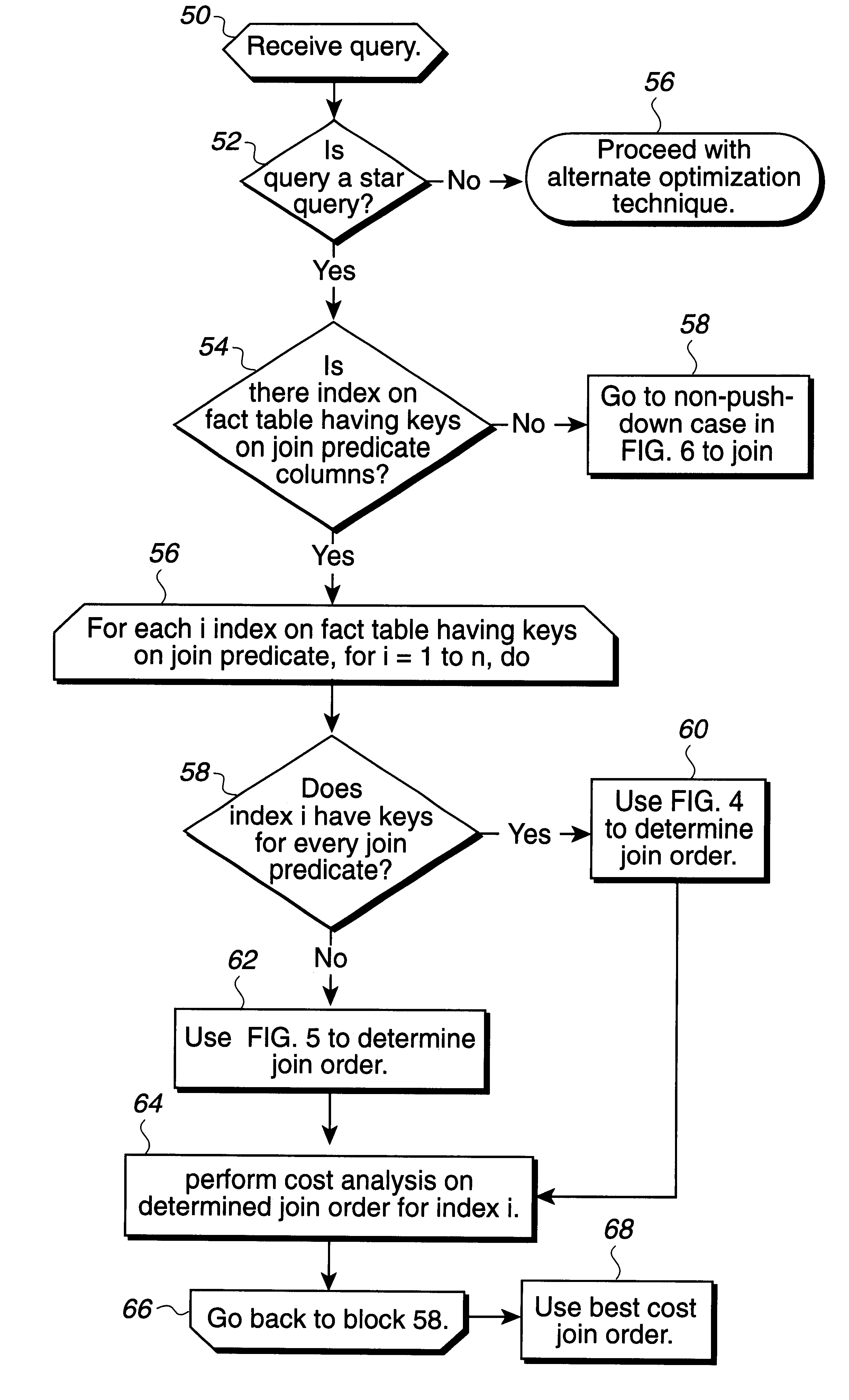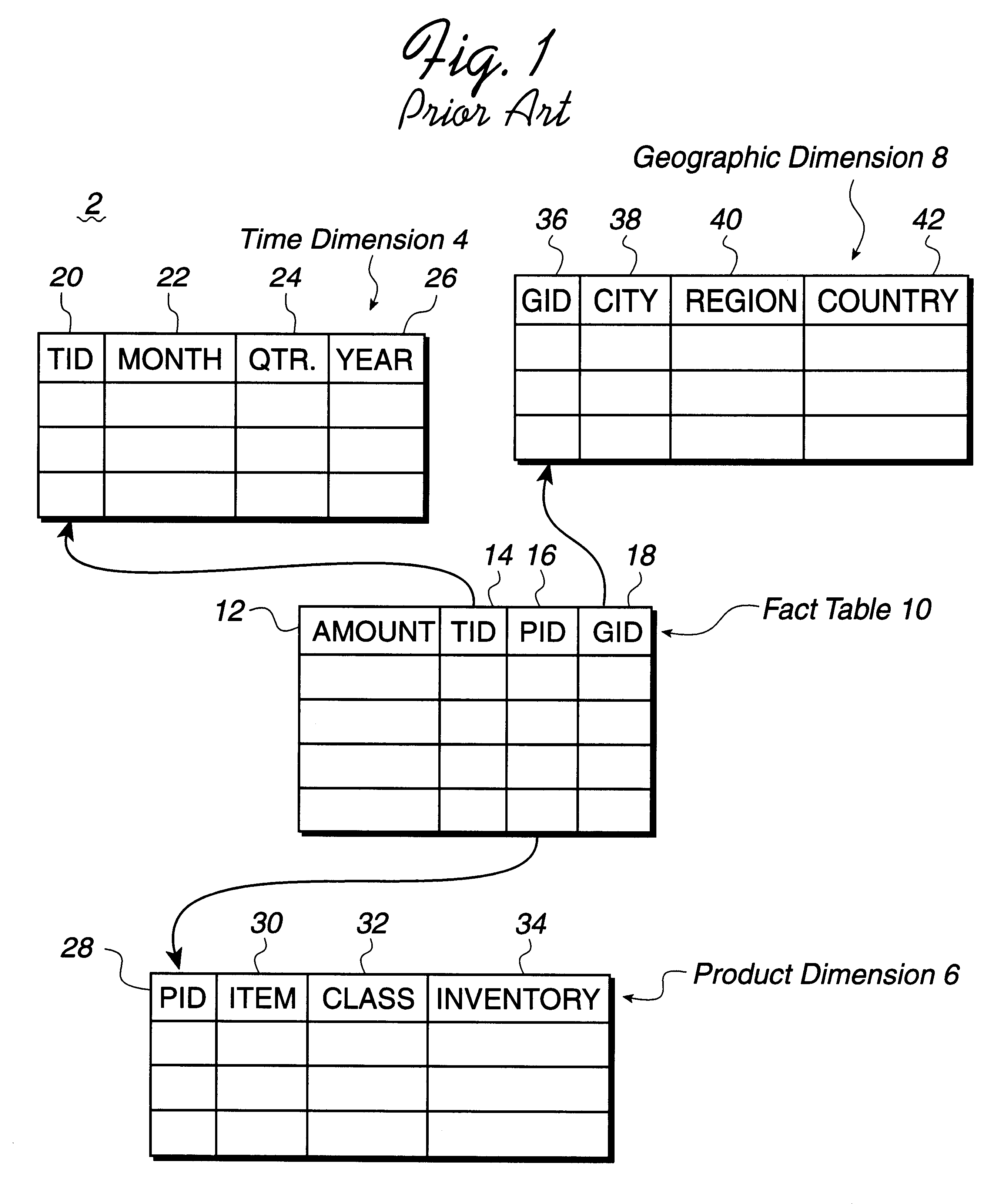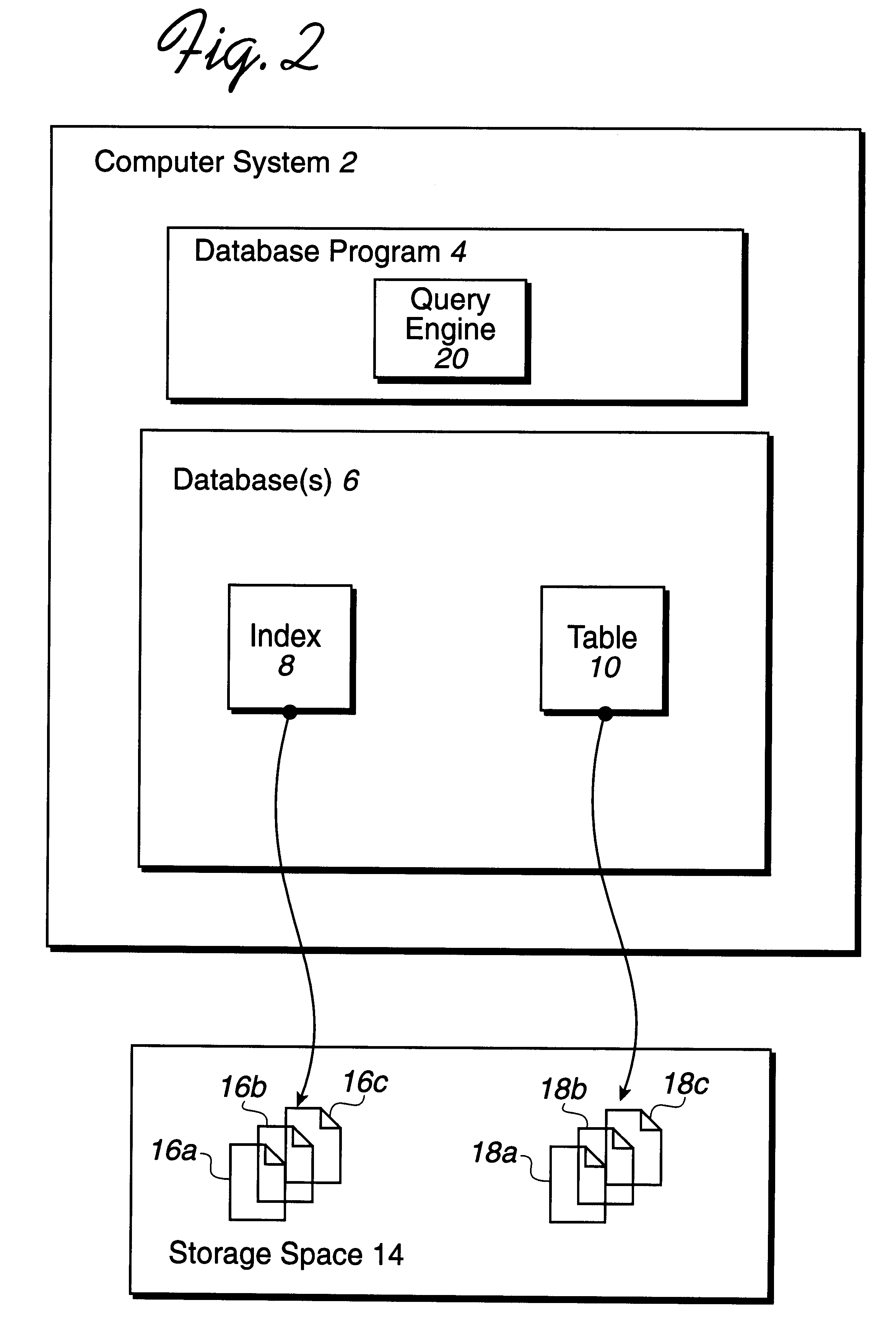Method, system, and program for determining the join ordering of tables in a join query
a join query and join ordering technology, applied in the field of method, system and program for joining a multicolumn, can solve the problems of significant processing time and memory usage of techniques, unnecessary search of actual tables, and difficulty in current cost-based query evaluation techniques
- Summary
- Abstract
- Description
- Claims
- Application Information
AI Technical Summary
Benefits of technology
Problems solved by technology
Method used
Image
Examples
Embodiment Construction
To overcome the limitations in the prior art described above, preferred embodiments disclose a system, method, and program for joining a multi-column table and at least two satellite tables. Each satellite table is comprised of multiple rows and at least one join column and each multi-column table is comprised of multiple rows and join columns corresponding to the join columns in the satellite tables. A query including predicates is received. A join predicate column comprises the satellite table and multi-column table join column to which at least one query predicate applies. A determination is then made as to whether there is at least one index on the multi-column table including at least one column for one join predicate column. One index is selected. The ordering of the join predicate columns in the selected index is used to determine the join order of the satellite tables and the multi-column table. The satellite tables and multi-column tables are then joined in the determined j...
PUM
 Login to View More
Login to View More Abstract
Description
Claims
Application Information
 Login to View More
Login to View More - R&D
- Intellectual Property
- Life Sciences
- Materials
- Tech Scout
- Unparalleled Data Quality
- Higher Quality Content
- 60% Fewer Hallucinations
Browse by: Latest US Patents, China's latest patents, Technical Efficacy Thesaurus, Application Domain, Technology Topic, Popular Technical Reports.
© 2025 PatSnap. All rights reserved.Legal|Privacy policy|Modern Slavery Act Transparency Statement|Sitemap|About US| Contact US: help@patsnap.com



